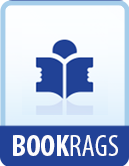Another great conquest of the salt unknown taken place a few days before Columbus sailed on his third voyage. The accidental discovery of the Cape by Bartholomew Diaz in 1486 had not been neglected by Portugal; and the achievements of Columbus, while they cut off Portuguese enterprise from the western ocean, had only stimulated it to greater activity within its own spheres. Vasco da Gama sailed from Lisbon in July 1497; by the end of November he had rounded the Cape of Good Hope; and in May 1498, after a long voyage full of interest, peril, and hardship he had landed at Calicut on the shores of the true India. He came back in 1499 with a battered remnant, his crew disabled by sickness and exhaustion, and half his ships lost; but he had in fact discovered a road for trade and adventure to the East that was not paved with promises, dreams, or mad affidavits, but was a real and tangible achievement, bringing its reward in commerce and wealth for Portugal. At that very moment Columbus was groping round the mainland of South America, thinking it to be the coast of Cathay, and the Garden of Eden, and God knows what other cosmographical—theological abstractions; and Portugal, busy with her arrangements for making money, could afford for the moment to look on undismayed at the development of the mine of promises discovered by the Spanish Admiral.
The anxiety of Columbus to communicate the names of things before he had made sure of their substance received another rude chastisement in the events that followed the receipt in Spain of his letter announcing the discovery of the Garden of Eden and the land of pearls. People in Spain were not greatly interested in his theories of the terrestrial Paradise; but more than one adventurer pricked up his ears at the name of pearls, and among the first was our old friend Alonso de Ojeda, who had returned some time before from Espanola and was living in Spain. His position as a member of Columbus’s force on the second voyage and the distinction he had gained there gave him special opportunities of access to the letters and papers sent home by Columbus; and he found no difficulty in getting Fonseca to show him the maps and charts of the coast of Paria sent back by the Admiral, the veritable pearls which had been gathered, and the enthusiastic descriptions of the wealth of this new coast. Knowing something of Espanola, and of the Admiral also, and reading in the despatches of the turbulent condition of the colony, he had a shrewd idea that Columbus’s hands would be kept pretty full in Espanola itself, and that he would have no opportunity for some time to make any more voyages of discovery. He therefore represented to Fonseca what a pity it would be if all this revenue should remain untapped just because one man had not time to attend to it, and he proposed that he should take out an expedition at his own cost and share the profits with the Crown.




